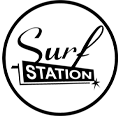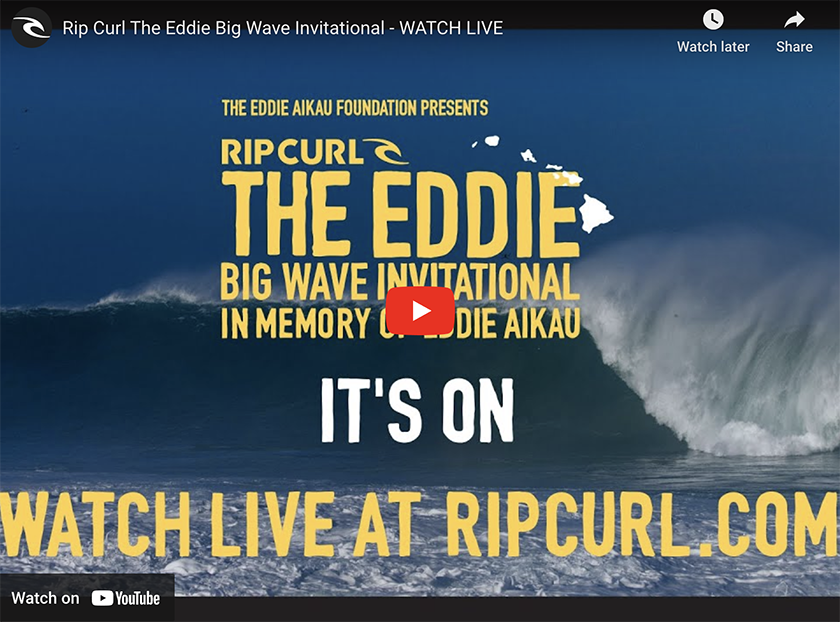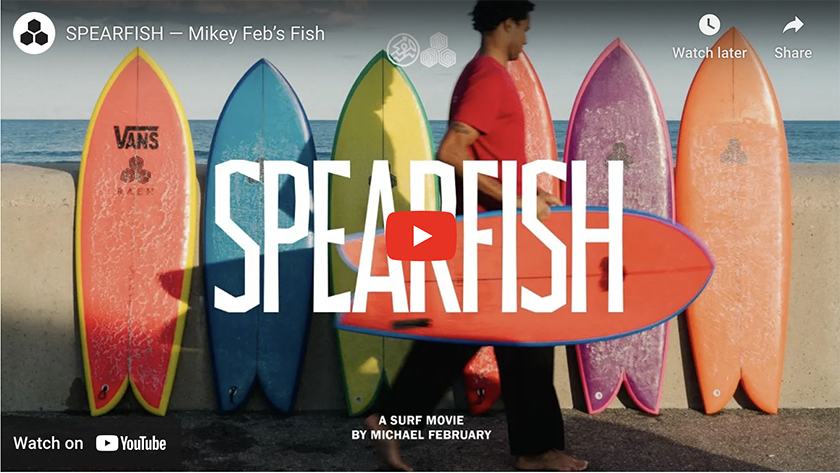Is Surfing During a Pandemic Responsible?
Prior to the outbreak of the coronavirus, it’s fair to assume that people in this world didn’t think about their daily activities in terms of being “essential” or “non-essential”. Following the global spread of the pandemic that has both stolen and reshaped life as a whole, this categorization is a now familiar daily practice. We draw a line between “needs” and “wants”. We then discover that what may be deemed essential to one citizen, may strike another as completely frivolous. Among these hotly debated activities is one of the parts of life that we here at the shop love most: surfing.
While many hail surfing as a therapeutic activity that can improve mental and physical health while maintaining social distancing guidelines, others tend to disagree. Across the world and in our own sleepy surf town, residents have condemned recreational beach visits as irresponsible during this health crisis. In some corners of the world, the sport was banned completely, in others, the sport of surfing was presumed safe and essential.
Two parts of the globe that implemented woefully contrasting responses to this debate are Hawaii and Puerto Rico. We reached out to shop friends John Begley of Hawaii and Greg Jaudon of Puerto Rico to gain some insight into how life on these two islands has been affected by the pandemic. Now, nearly a month later, we’ve followed up with two more residents of both Hawaii and Puerto Rico to learn how their local governments have continued to handle the public’s access to surfing during the pandemic. This week we’re revisiting the question: is it safe or selfish to surf during a pandemic?
Surfing During a Pandemic: Hawaii
Last month, we spoke with long-time surfer and current resident of the North Shore of Oahu, John Begley, to learn more about how the big island has handled beach closures during the coronavirus. This month, we spoke with Sean Anderson, a resident of Honolulu on the island of Oahu for the last 25 years, for an update. Not only does Anderson live in the birthplace of surfing, he also owns his own surf school, the Ohana Surf Project. Needless to say, Anderson’s life is built on surfing.
“My company and all similar businesses have been under mandatory shut down orders since March. So, we have had no revenue since that shutdown was implemented,” Anderson explained. “It has obviously been bad for business. Luckily for us, we were relatively well situated and have been able to ride things out so far. Some businesses have not been so lucky.”
The loss of business is due in part to the state’s strict restrictions on travel and tourism since the threat of the coronavirus became known. As we heard last month from Begley, the island has implemented a mandatory 14-day quarantine for anyone visiting the island. Those who don’t abide by this, are either arrested or sent back home.
“The 14-day quarantine for people arriving in Hawaii is not scheduled to be lifted until sometime after June 30th. So, most tourist generated business and tour operations will be out of business at least until July. This will mean a loss of a large portion of one of the busiest, peak revenue periods in the year,” Anderson said. “Some businesses are already open, including retail stores, which started opening recently. Grocery stores, take out eateries, and construction businesses, and all other businesses deemed “essential” have remained open the entire time.”
At the time of this writing, the island of Hawaii is experiencing 664 confirmed cases of Co-Vid 19, and the state has suffered 17 deaths. By comparison, the state of Florida has 62,758 confirmed cases and has experienced 1,270 deaths. While our home state implemented temporary beach shut downs that forbid surfing, Hawaii has permitted resident use of its beaches through this pandemic. The island has recently lifted one of its few restrictions on outdoor activities, by reopening city and county beaches and beach parks that were previously closed back in March.
“The surf has been good and most breaks have been packed. There are lots of people out shopping, jogging, and working out in our neighborhoods and in the parks. It has been a lot harder for the elderly and at risk, but our number of reported cases are low compared to most of the United States,” Anderson said. “As long as you only used the beach or beach park to access the ocean for exercise and you aren’t “loitering”, there were virtually no enforcement actions other than officials asking people to “move on” if they appeared to be loitering.”
At this point, is it fair to assume that socially distant surfing does not have a marked effect on the spread of the coronavirus? Bearing in mind the number of cases in surf-centric Hawaii, we’d hazard to believe this to be true.
Surfing During a Pandemic: Puerto Rico
While Hawaii has permitted surfing for the entirety of this crisis, Puerto Rico implemented strict and total beach closures. Last month, Greg Jaudon shared how the Puerto Rican government opposed even socially distant surfing, turning beachgoers and surfers around to return home before they could touch the sand or enter the water. A hefty fine was promised to those who could not obey the state’s orders.
This month, we spoke with former St. Augustine resident and surf shop/surf school owner, Melissa Taylor. Taylor now resides in Barrio Puntas in Rincon, and has for the last 19 years. She, along with all other residents of the island, were placed on a very strict lockdown on March 15th this year.
“In the beginning of the lockdown, a few people were attempting to surf, being chased out of the water here and there, but it was hit or miss,” Taylor explained. “A few lucky ones were getting away with it. After three weeks or so, police became more strict and started arresting people. [They were] handcuffing them, taking them to the police station and giving them a fine and a court date.”
Being an avid surfer and business owner, Taylor has felt the effect of beach closures deeply.
“I am fortunate to live behind Domes beach so I have a trail that takes me down to the ocean. I walk down and jump in the ocean if I can, but it is always very quick. I’ve been seen twice by police, but no tickets. I ran into the trails before they got me. I also have had one surf session in the last 67 days.” Taylor revealed. “I snuck in a quick session down by River Mouth one day. I was lucky enough to get away with it that day, but with the police becoming stricter by the day. I don’t want to risk it again.”
Outside of beach closures, other aspects of recreational life on the island were also subject to rigorous restriction. There was a curfew in place spanning from 7 pm to 5 am, with warnings sent to residents’ phones nightly to remind them to make it back home before the curfew went into effect. Driving privileges were restricted to a handful of days a week for each resident, alternating between even and odd license plate numbers to decrease activity on the island. Residents were unable to leave their homes unless it was for emergency services, for food, or for gas. On Sundays, travel was off-limits and all businesses were closed.
At the time of this writing, Puerto Rico has 4,915 confirmed cases of the virus, and has experienced 142 deaths. As we saw in Jaudon’s account last month, these numbers continue to rise despite stringent isolation measures being taken by the government. However, the island is beginning to follow a national trend of re-opening despite these facts. On March 22nd, I received a concise, cheerful message from Taylor:
“Just to let you know, our governor opened our beaches this Tuesday for exercise only, that includes surfing. I surfed today and was not bothered!”
When viewing the spread of the virus in Hawaii and Puerto Rico respectively, one has to wonder if surfing has a negative effect whatsoever. This, of course, is based on the assumption that surfers can remain socially distant in the water and are not congregating in parking lots or beach parks. If surfing cannot be argued to be an essential activity in a physical sense, it could certainly be argued to be an financially essential for business owners in surfing meccas around the globe.
“Most people are not working and receiving no help from the government, and therefore are not able to buy supplies or food for their families,” Taylor said. “There are so many poor families on the island and our government has not been helping at the capacity that they should be.”
Taylor explains that their Floridian neighbors to the north can help the Puerto Rican community by sending some basic supplies. Food, water, masks, cleaning supplies, hand sanitizer, and disinfectants top the list of in-demand materials. After the threat of the virus has subsided (when this will happen remains widely unknown), surfers and beach goers alike are welcomed back to the island with open arms.
“You can help by also visiting the island once this is all over and it is safe to travel again. The tourism industry has been hit hard since the hurricane in 2017,” Taylor said. “The Puerto Rican people are incredibly kind, giving, and very resilient.”








